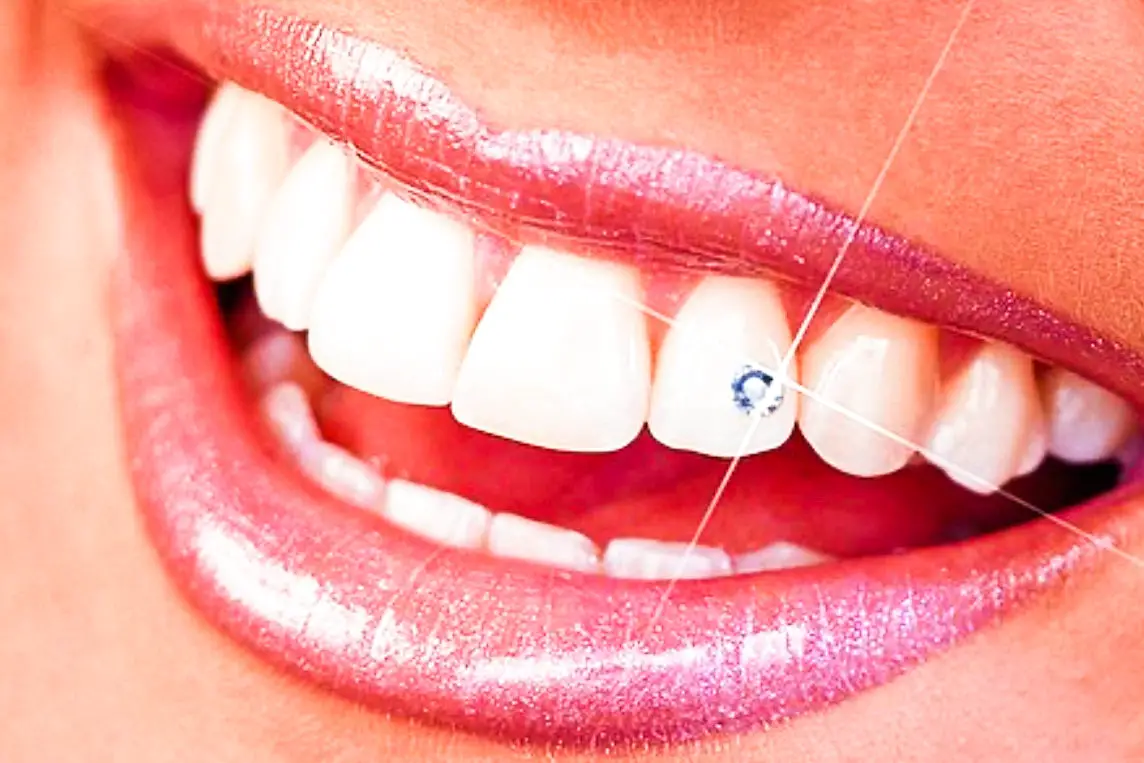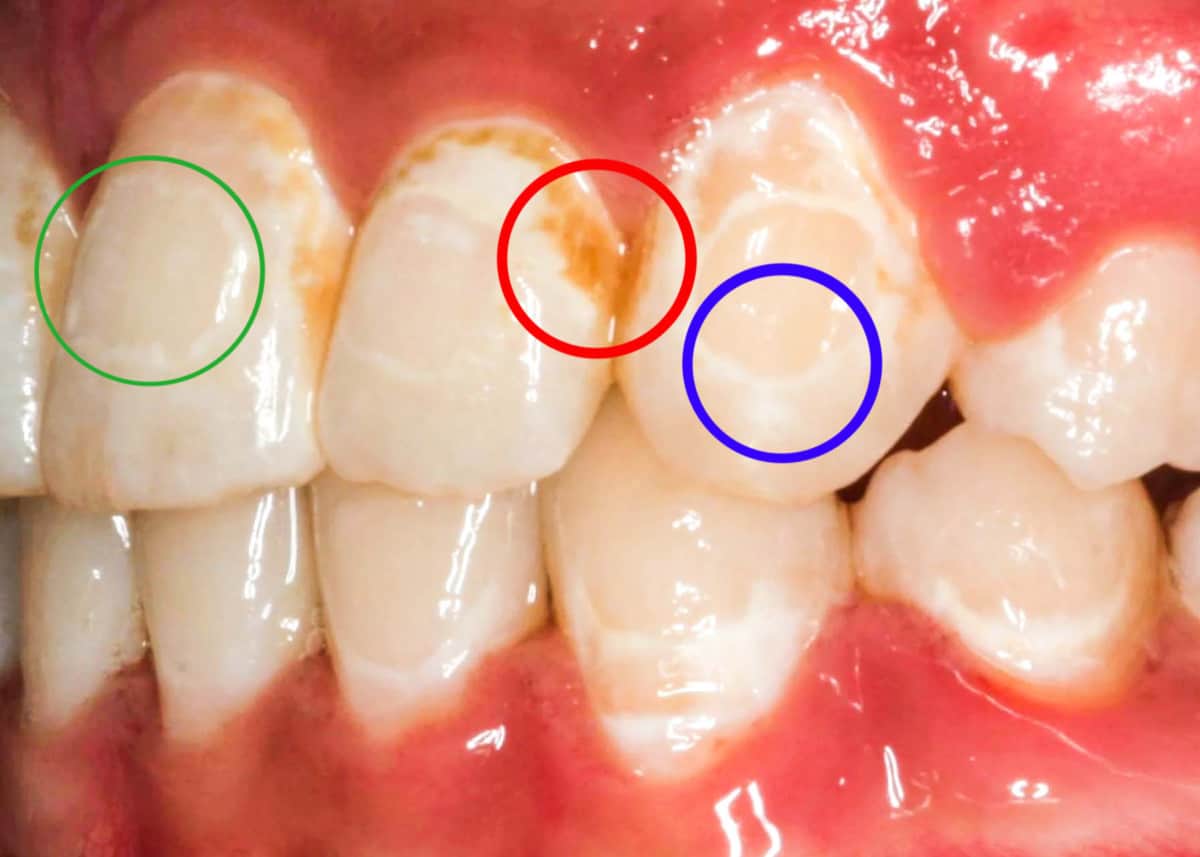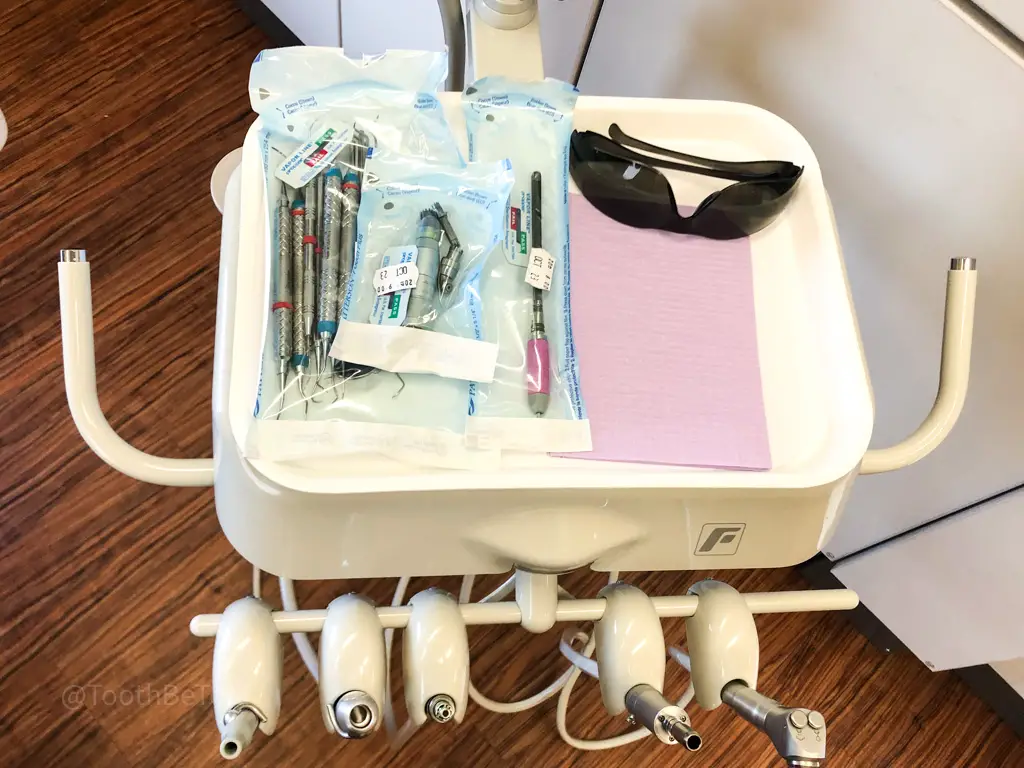Tooth gems have been around for thousands of years, dating from 1800 B.C. to A.D. 250, first placed by Mayan dentists. Nowadays, people are still getting tooth gems applied to their teeth. But now we know more about oral health and the effects that tooth gems have on the teeth. As a dental hygienist, I have a few patients who have had tooth gems, and I make sure to go over potential adverse effects and proper care.
Tooth gems increase the chance of tooth decay, dental plaque, and staining. If applied incorrectly, irreversible damage to the tooth surface can occur. Having a tooth gem applied by a licensed dental professional is crucial to prevent tooth damage, learn correct aftercare, and prevent issues.

In this post, I go over how teeth gems can damage teeth, how to avoid damage, and why it is crucial for a dental professional to apply the tooth gem!
How tooth gems damage teeth and how to avoid
I never want to stop someone from getting a tooth gem! But I want to make sure they know who you are getting to place it and understand how to best take care of it to prevent tooth damage and make it last for as long as possible. However, If you are considering getting a tooth gem, please see a licensed dental professional.
The most significant danger of having a non-licensed dental professional applying tooth gem is infection control.
Cross-contamination is extremely dangerous and can spread hepatitis, HIV/AIDS, herpes simplex virus, HPV, and other common viruses and blood-borne pathogens.
Below is a complete list of how tooth gems can damage teeth, and further on, I go into more detail about the sterilization of instruments and the risk of cross-contamination.
Over etching of enamel can cause irreversible damage
A risk of having a tooth gem put on by a non-professional includes damage to the enamel by over-etching. The enamel must be etched with a particular acid etch for the dental cement to adhere properly to the tooth.
The acid etch starts to dissolve the enamel, and part of the enamel dissolves faster, leaving behind projections similar to velcro if you look at the enamel under a microscope.
The projections are critical to have, so when the dental cement is put on the tooth, it will flow between the projections, and once the cement is cured, it will have a solid hold, if you can imagine concrete velcro.
Read Now: Hygienist Compares: Sonicare vs. Oral-B Electric Toothbrushes
If the enamel is etched too long, the projections will dissolve as well, leaving the surface more smooth, and the cement has nothing to hold onto to provide a strong hold. Also, over-etching of enamel can cause irreversible damage to the tooth.
Tooth decay (cavities) and stains around tooth gems
Tooth gems can damage teeth because they can be a breeding ground for bacteria, and cavities can start to form on the tooth around the tooth gem.
I recently had a patient in my dental chair who had one applied by a non-licensed dental professional, and the work was pretty bad. There was an excessive amount of dental cement bonding the gem to the tooth that was causing food and plaque to gather around it.
I explained to her that because there was so much cement around the gem, it was more likely to catch food and plaque, increasing the chance of a cavity and staining.
When there is too much cement used to place the tooth gem, there is a more significant edge that the bacteria can thrive around. Bacteria produce acid, which will start to demineralize and dissolve the tooth surface. Once enough tooth structure has been lost, a hole will form, forming a cavity.
The first stage of a cavity is when the tooth loses minerals from the tooth structure. The loss of minerals causes the tooth to have a chalky white appearance. Sometimes the chalky white lesions can become permanent, and once the tooth gem comes off, a white ring will remain around where the tooth gem is.

Poor oral hygiene increases the risk of decay and staining by a significant amount. Brushing around the tooth gem is important to prevent all the issues I have discussed above. It is also a good idea to see a dental professional regularly to ensure the teeth are healthy!
Read Now: White Spots from Braces; Are They Permanent?
Enamel and tooth damage upon tooth gem removal
If the tooth gem is improperly applied, when it is removed, I can take a chunk of enamel off with it. If some enamel is lost upon removal, it will leave a void in the tooth that will stain, attract more bacteria and be harder to keep clean, increasing the chance a cavity may form and tooth sensitivity.
These risks can be mitigated by having a licensed dental professional apply the tooth gem but also remove it when it is time. Below I touch on why this is so important and why the risks aren’t worth taking!
Why is it so important to have a dental professional apply tooth gems?
It would be best if you had a dental professional apply tooth gems to your teeth because they are specifically trained and educated to provide the safest application, the highest quality of treatment, and safe removal.
Safety should always be the number one priority!
Infection control and cross-contamination prevention
Infection control is the most significant risk to our overall health. In a dental office, we sterilize the dental instruments to the highest standard and the equipment is maintained and evaluated to ensure safety.
You are at risk if you have a tooth gem placed by a non-dental professional, especially if they do not have access to properly sterilized instruments and the correct cleaning supplies. Sterilizers and proper instrument processing procedures cost thousands of dollars and maintenance.
Dental offices are highly regulated to ensure proper sterilization procedures.
Hepatitis, HIV/AIDS, herpes simplex virus, HPV, and other common viruses and blood-borne pathogens can spread from person to person if tools are not correctly processed and sterilized.

Aside from the severe infection control and cross-contamination issues, the materials used can be an issue and application problems can be unsafe and cause the tooth gem to fail prematurely.
Safe materials and products from trusted sources
At a dental office, we source our products and materials from reputable dental supply companies that only sell regulated and safe products. If you get your tooth gem done by a non-dental professional, there is no guarantee you are getting the best and safest products.
When a tooth gem has been applied to a tooth, the tooth should be cleaned professionally beforehand. If any calculus (tartar) is present on the teeth, the tooth gem will not adhere properly.
Proper preparation of tooth before tooth gem application
I use pumice with my tooth polishing handpiece after any calculus is removed to ensure debris and saliva are removed. I have seen videos of non-dental professionals giving their “patients” a tooth wipe to clean their teeth before applying the gem. This is just not good enough to ensure a clean surface.
Also, when the acid etch is applied to the tooth, it must be thoroughly rinsed away, not just wiped away. Dental professionals have a special air/water syringe tip to ensure that the acid etch is effectively rinsed away with water, and an air setting to dry the tooth thoroughly.
It is important for the tooth to be fully dry when the dental cement is placed because any water contamination will cause the tooth gem to fail much earlier.
If the tooth is wiped dry, tiny fibres can be deposited onto the tooth, again decreasing the bond between the dental cement and the tooth, causing it to fail early.
I hope this information has found you well and answered your questions!
Holly 🙂
